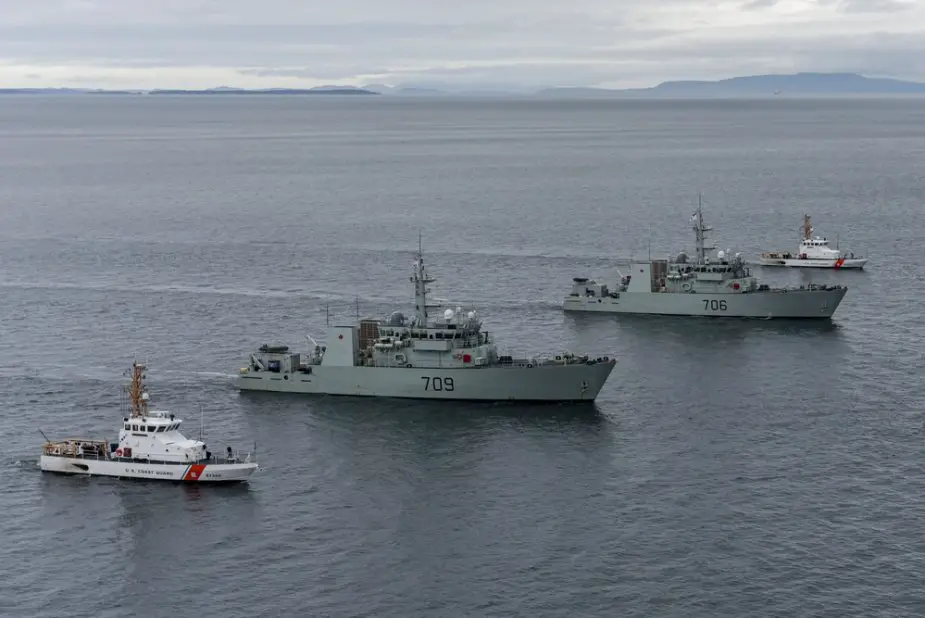Breaking news
Exercise between Royal Canadian Navy, US Navy and US Coast Guard.
According to information published by the U.S. DoD on February 23, 2022, an exercise was conducted between Canada, US Navy, and U.S. Coast Guard to train and prepare Royal Canadian Navy crews for deployments to support United States counter-narcotics operations.
Follow Navy Recognition on Google News at this link
 Coast Guard Cutter Blue Shark transits the waters of the Salish Sea alongside HMCS Saskatoon and HMCS Yellowknife (Picture source: US. DoD)
Coast Guard Cutter Blue Shark transits the waters of the Salish Sea alongside HMCS Saskatoon and HMCS Yellowknife (Picture source: US. DoD)
HMCS Saskatoon is a Kingston-class coastal defence vessel delivered to the Canadian Forces in 1998. Saskatoon is assigned to Maritime Forces Pacific (MARPAC) of the Royal Canadian Navy and is homeported at Canadian Forces Base (CFB) Esquimalt.
The vessels displace 990 tonnes (970 long tons) and are 55.3 metres (181 ft 5 in) long overall, with a beam of 11.3 metres (37 ft 1 in) and a draught of 3.4 metres (11 ft 2 in).
The vessels are powered by four Jeumont ANR-53-50 alternators coupled to four Wärtsilä UD 23V12 diesel engines creating 7.2 megawatts (9,700 hp).
Two 360° rotating LIPS Z-drive azimuth thrusters on the Kingston class are driven by two Jeumont CI 560L motors creating 2,200 kilowatts (3,000 hp) giving the ships a maximum speed of 15 knots (28 km/h; 17 mph) and a range of 5,000 nautical miles (9,300 km; 5,800 mi) at 8 knots (15 km/h; 9.2 mph).
The Kingston class are equipped with a Kelvin Hughes navigational radar using the I-band (NATO) and a Kelvin Hughes 6000 surface search radar scanning the E and F bands. The vessels carry AN/SQS-511 towed side scan sonar for minesweeping and a remote-control mine hunting system (RMHS).




























